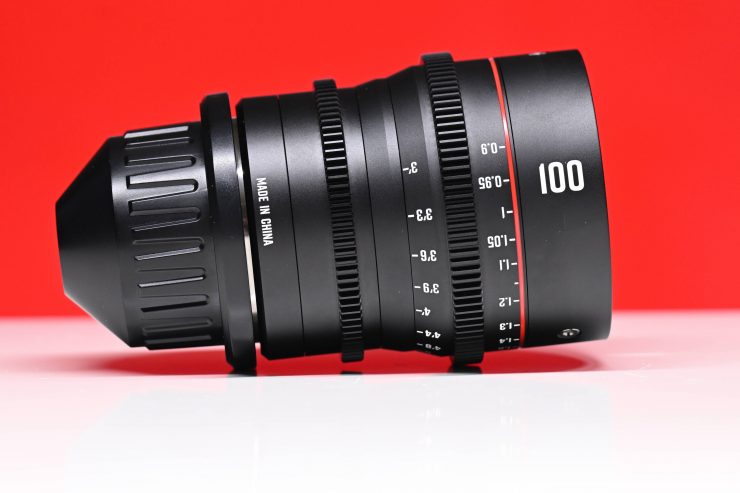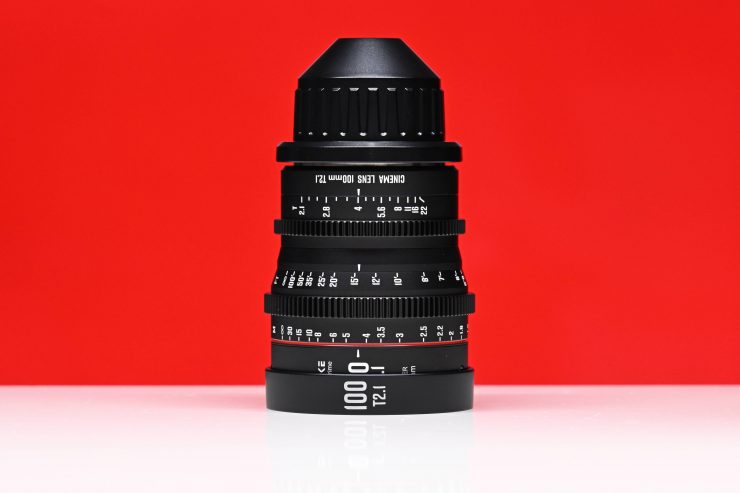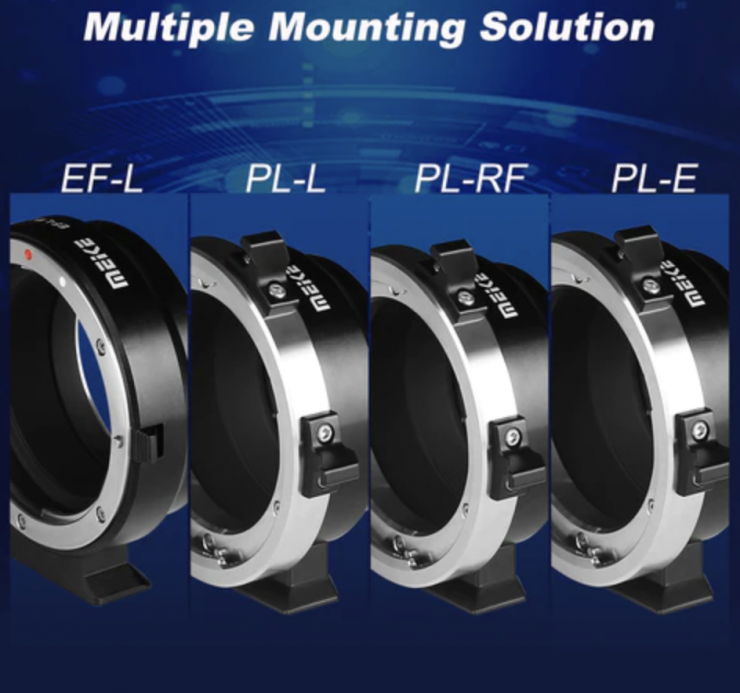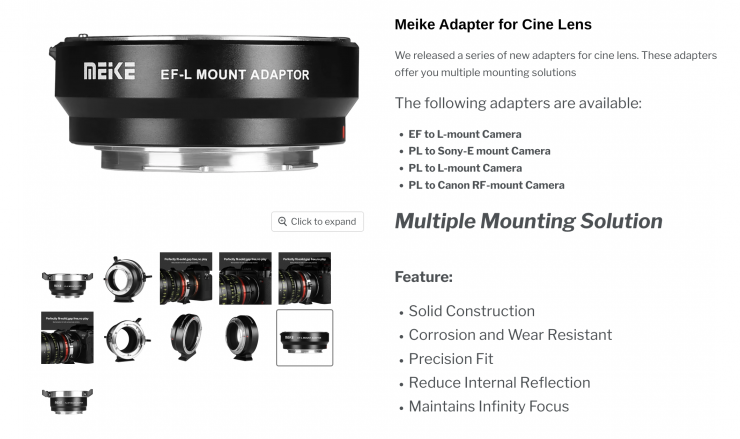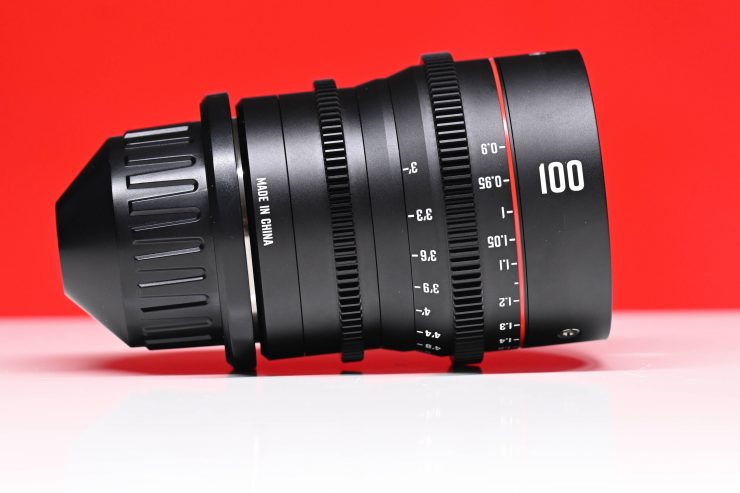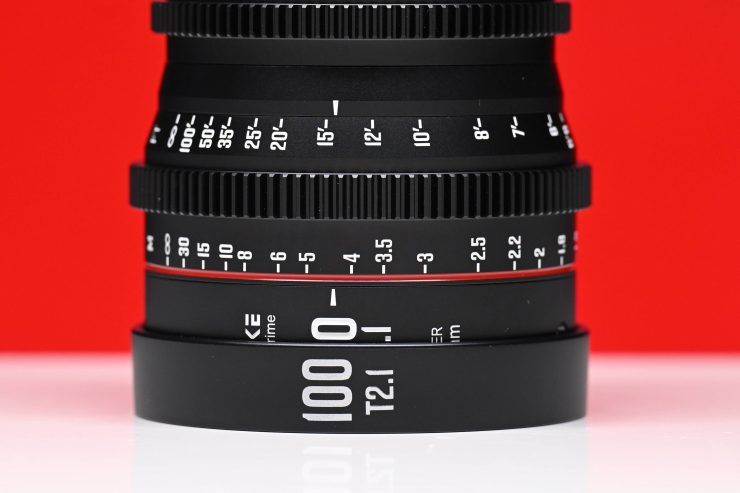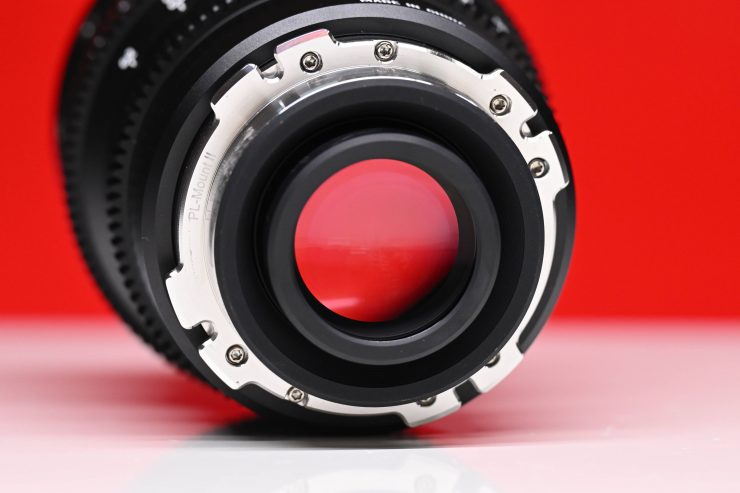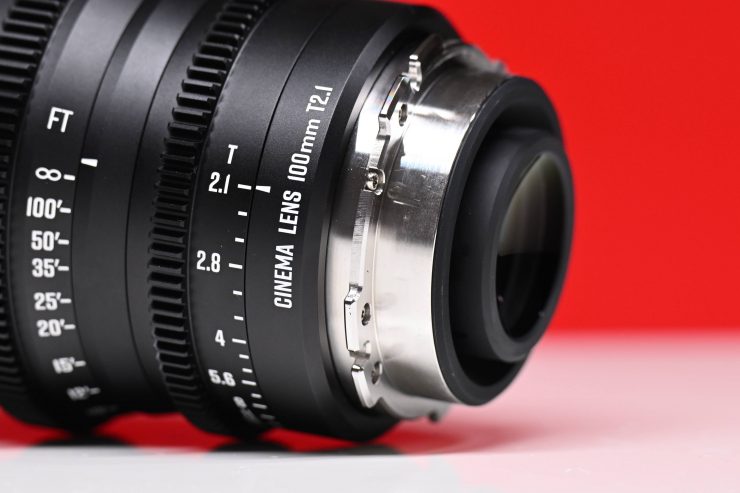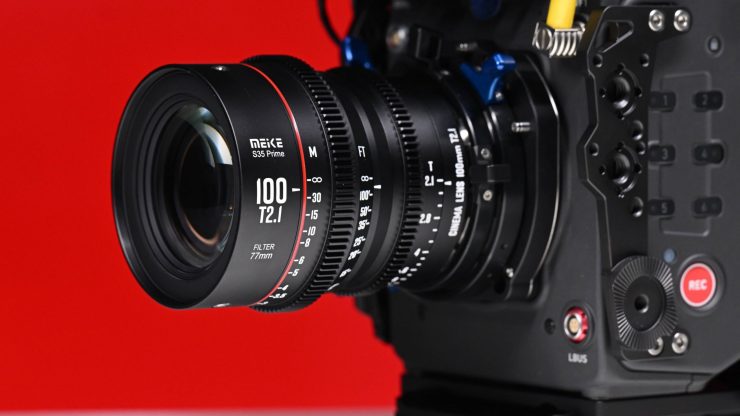
Meike recently announced its new 100mm T2.1 cine lens that covers S35 sized sensors. It is available in either PL or Canon EF mount.
The 100mm T2.1 now completes the S35 set. Meike now has the following lenses available:
- 18mm T2.1
- 25mm T2.1
- 35mm T2.1
- 50mm T2.1
- 75mm T2.1
- 100mm T2.1
This makes for a nice and relatively inexpensive six-lens set and all the lenses feature a common T2.1 aperture. Would I like to see more focal lengths added in the future? Yes, but you don’t tend to see affordable cine primes in sets of more than 6-8 lenses. It would be nice to have a longer focal length than 100mm.
I have previously reviewed the 35mm T2.1 on the site.
While the lens only comes in PL or EF mount, you can purchase additional MEIKE adapters so that you can use them on other systems if required.
Concept
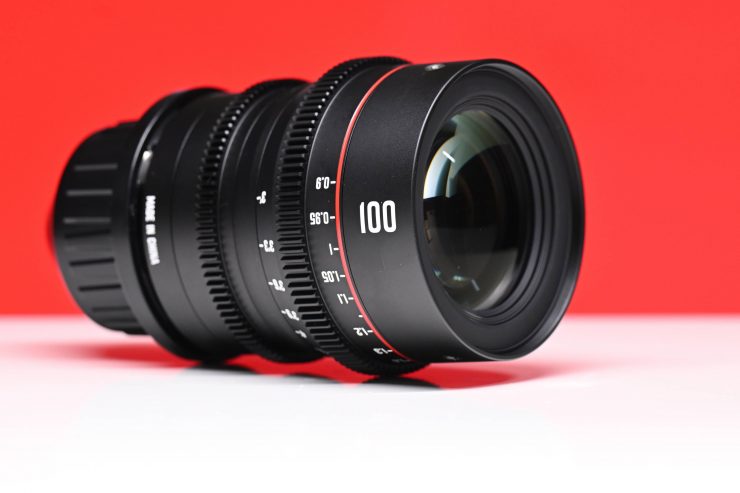
The 100mm T2.1, just like the rest of the lenses in the series is being touted as an affordable, compact-sized cine prime lens. The Meike S35 series is a good option if you are thinking about getting dedicated cine prime lenses, but don’t have a lot of money to spend. In a lot of ways, lenses like these offer cine-style mechanics at the price point of a normal stills lens. I have previously reviewed quite a few Meike lenses and they offer very good optical performance considering their low price point. They are clean lenses and while they don’t have a ton of character they are perfect for a lot of projects, especially corporate work.
As I have already mentioned the lenses will cover S35 sized sensors. However, the actual image circle coverage is 33.6mm, so as you will see further down in the review they will actually cover a lot of full frame sensors when shooting in 4K or UHD. Now, these lenses are only available in Canon EF or PL mounts. The mounts are not swappable. A user-swappable EF/PL mount would have made a lot of sense, especially given the target audience for this lens.
S35 made a resurgence in 2022 with ARRI, RED, Sony, and several other camera manufacturers releasing new cameras. The great aspect of S35 sensor-sized cameras is that there is a lot broader range of lenses with better focal lengths available than there is for full frame and larger sensor cameras.
Size & Weight
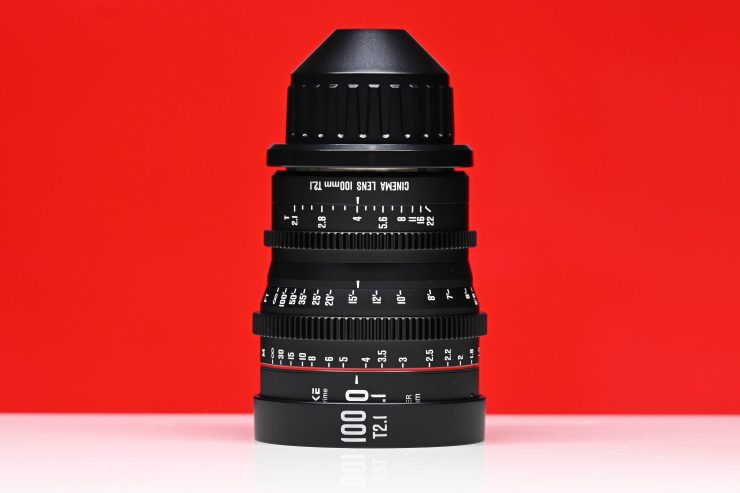
The 100mm T2.1 tips the scales at 990g (34.92oz) in PL mount, and 1kg (35.27oz) in Canon EF mount. This is quite a lot of weight for a small lens, but it still makes it manageable on a wide array of cameras.
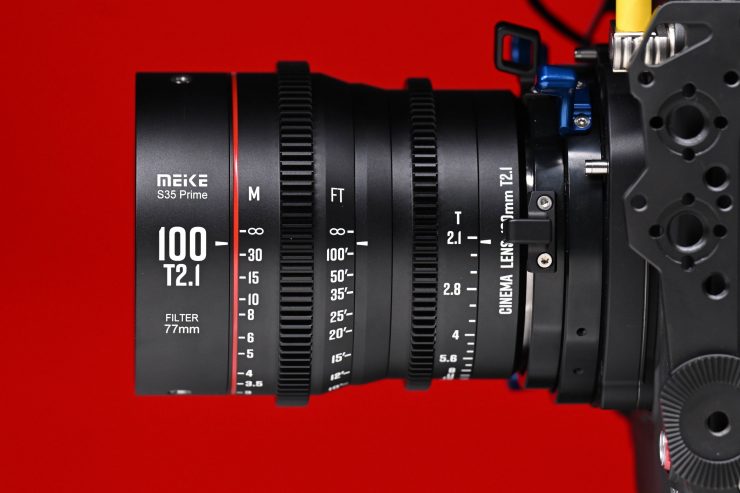
The PL-mount version is 98.5mm (3.88″) long and the Canon EF mount version is 106.5mm (4.19″) long.
Build Quality
The lens feels solidly made (especially for a lens at this price). The focus and iris rings are nicely weighted, and their movement is smooth and consistent.
The issue I find when reviewing more affordable cine lenses is that the build quality is never consistent between the focal lengths. In this case, the build quality of the 100mm is better than that of the 35mm T2.1 that I previously reviewed. With the 35mm T2.1, the focus ring had noticeably more friction when moving toward infinity than when it is moved back toward its minimum focus distance.
This is what you need to be mindful of when purchasing affordable cine lenses. I certainly can’t speak for the build quality of every lens, but the end user expects that the build quality should be consistent across the range.
Markings
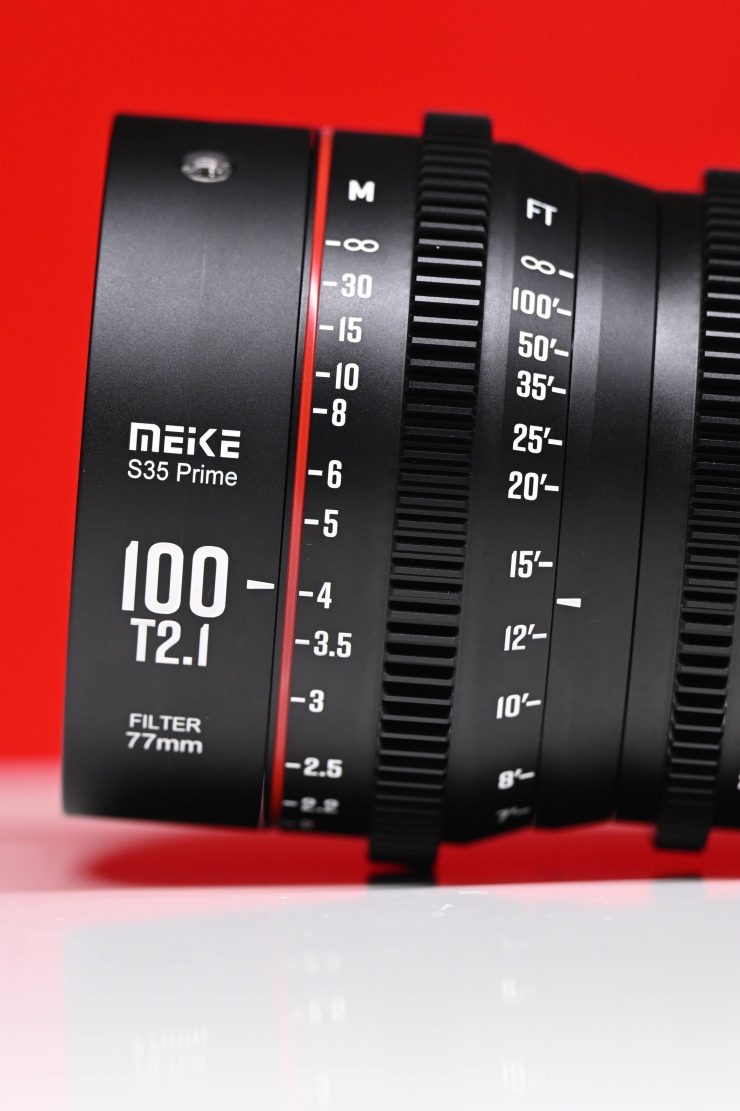
The markings on the lens are shown in both feet and meters, which used to be quite unusual, but it has become increasingly more popular with ‘affordable’ cine lenses. Having markings in both feet and meters saves on making multiple versions and it helps to keep the cost down.
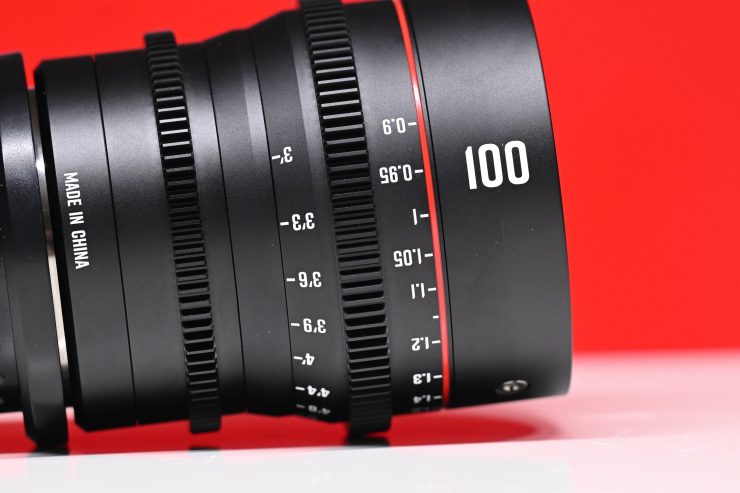
Now, as this lens has been designed primarily for solo shooters or small crews, you don’t get markings on the opposite side of the lens.
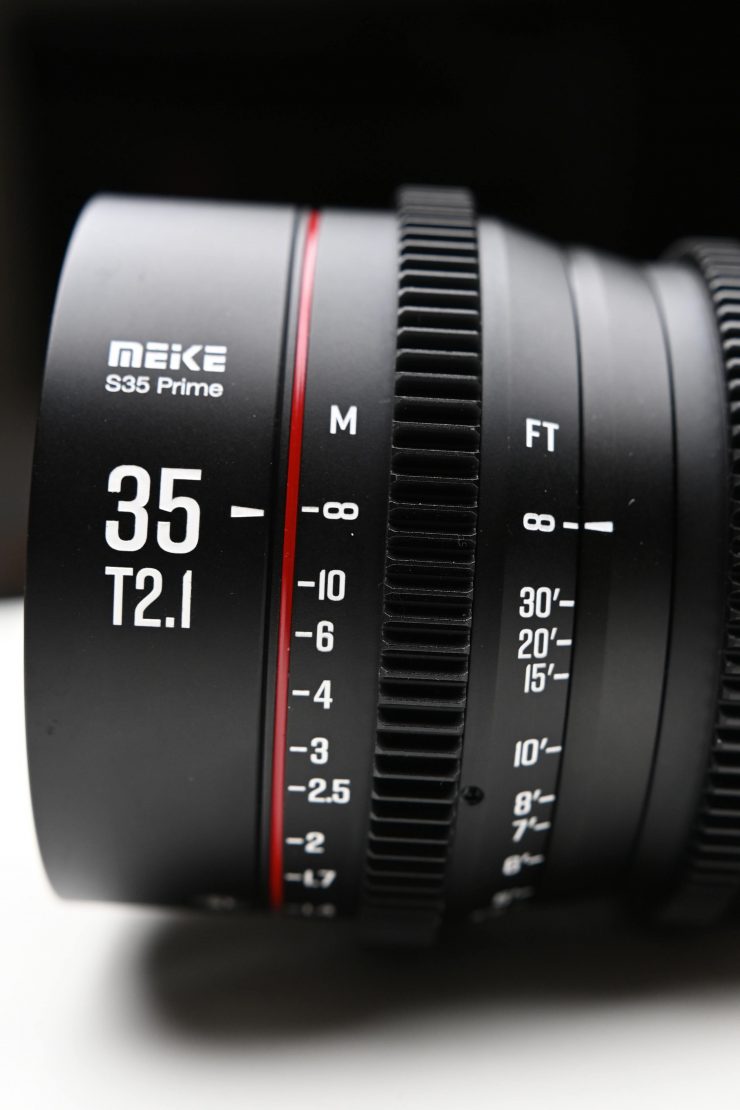
On the 35mm T2.1 that I previously reviewed, I did notice that the infinity marking in meters didn’t line up with the infinity marking for feet. Again, this might be a minor complaint, but both of them should line up.
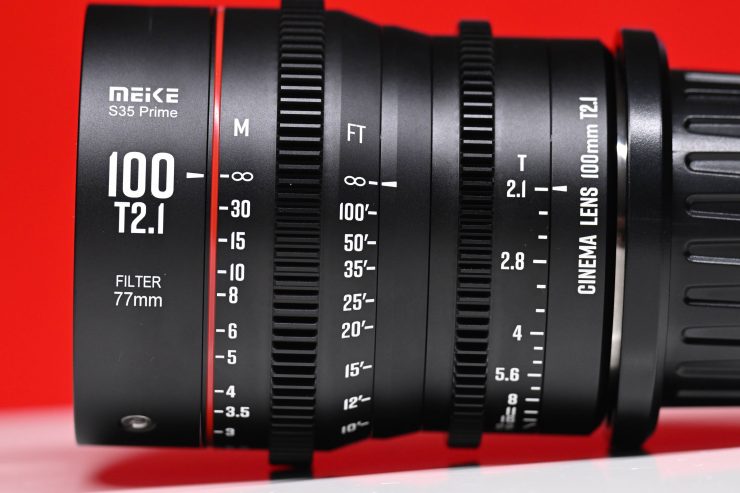
On the 100mm T2.1, everything lined up correctly.
Other Features
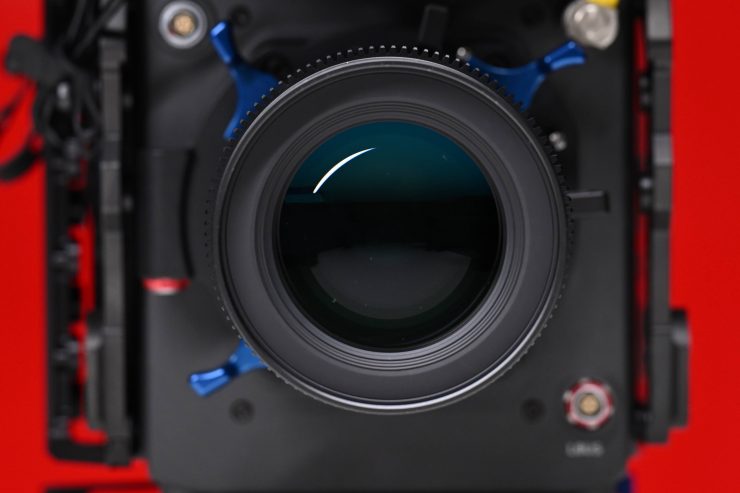
The lens has a 77mm front filter diameter so you can easily attach common-sized filters. The front diameter of the lens is 80mm which makes it a little harder to attach some matte boxes without an adapter ring, however, some smaller clip-on matte boxes such as the Wooden Camera 4 x 4″ Filter Zip Box for 80-85mm Exterior Diameter Lenses will attach directly to the lens.
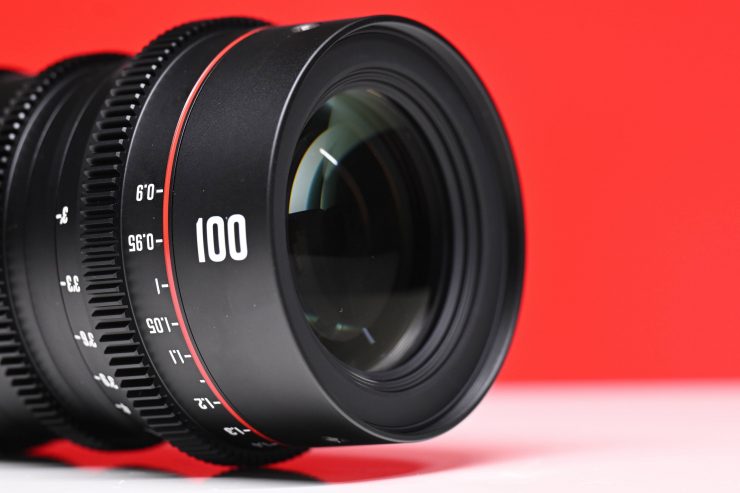
The minimum focusing distance is 90cm (35.43″). The lens has a focus throw of 270 Degrees and both the iris and focus ring feature industry-standard 0.8 pitch gears. It is possible to manually pull focus from infinity to the minimum focusing distance in one go, despite the large 270 degrees of rotation. This is mainly because the physical size of the lens barrel isn’t that big.
Is it actually a cine lens or just a rehoused stills lens?
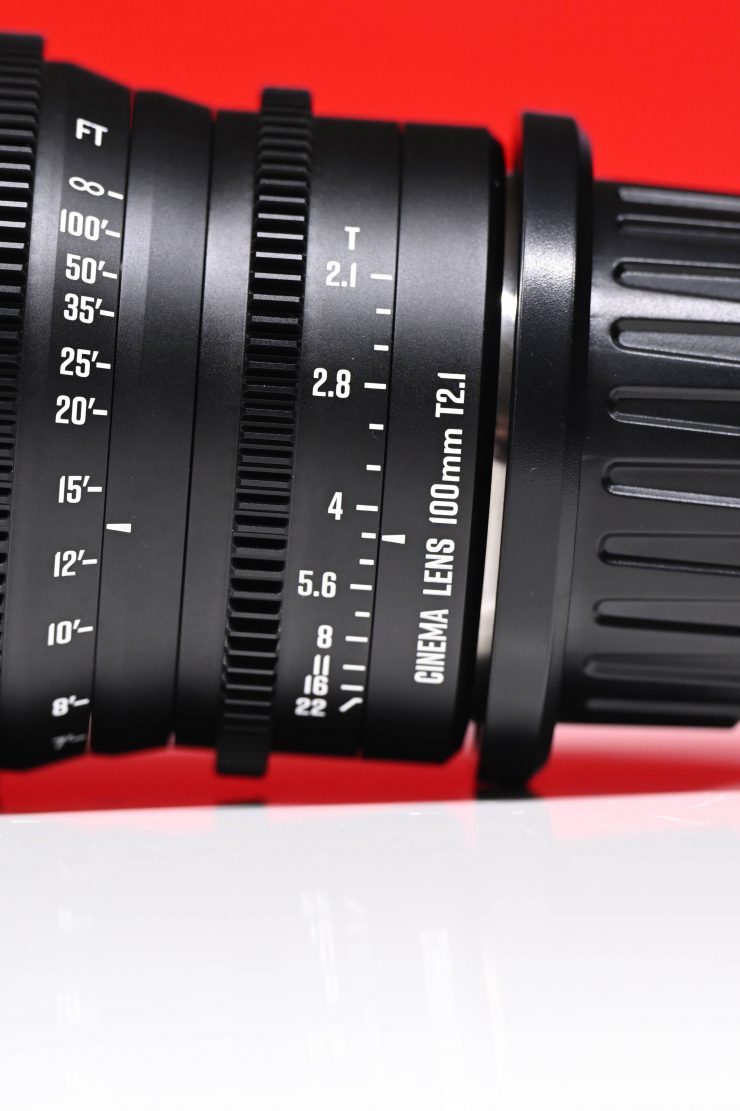
According to Meike, just like all of the S35 cine lenses, this is a purpose-built cine design and not a rehoused stills lens.
Optical Structure
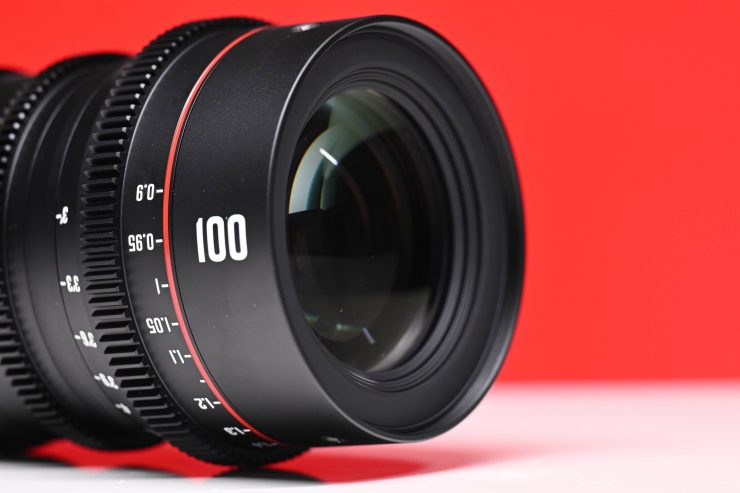
The 100mm T2.1 consists of 13 elements in 7 groups. The lens also has 12 aperture blades.
No Breathing?
I tested out the lens by doing large focus throws by hand, and while there is some breathing, for a lens at this price, it is very well controlled.
No lens technically has zero breathing, but very good cinema glass has such minimal amounts that it is virtually impossible to see. What you will always see is some perspective shift which is normal when refocusing a lens.
Image shift is the change in location of a fixed point after a focus rack. It should be in the same spot after you rack focus.
Perspective shift is the focal length of the lens being modified by the movement of the optics. A slight change in focal length may happen if there is a floating element that moves and is not properly corrected for in the design. Certainly, the great majority of lenses have this issue. It’s also tenths of a mm so not overly noticeable.
Focus breathing is a change in image size so the size of object will get larger as it moves out of frame. That is reproduction size.
In summary,
Fall off and Vignetting
I didn’t notice any real noticeable fall of or vignetting when using this lens on an ALEXA 35.
As the lens covers an image circle of 33.6mm I wouldn’t expect to see any vignetting or light fall-off when used on most S35 sized sensors.
Sharpness
This isn’t a super fast prime lens, so I would expect the sharpness to be pretty good, even when using it wide open at T2.1. As expected, the lens is nice and sharp, even when used wide open.
As you can see in my tests, sharpness does improve as you stop the lens down, and like most lenses, the sweet spot is probably between T4 and T5.6.
This is a nice sharp lens that can certainly be used wide-open with no issues whatsoever.
Lens Flare
I personally didn’t like the lens flare from the Meike, but that is just my personal opinion.
The lens does maintain a reasonable amount of contrast even when a bright light source is coming directly down the barrel, but when used wide open the flare lacks character.
When you stop down to T5.6 the flare and veiling are very well controlled. I personally preferred the look of the flare when you use the lens stopped down.
Chromatic Aberration
The lens doesn’t have any real-world visible chromatic aberration. You need to zoom in 300% when used at T2.1 to see some slight chromatic aberration around the edges of bokeh.
The lack of chromatic aberration is nice to see, but in saying that, with a T2.1 lens I didn’t expect to be seeing any in the first place.
Bokeh
Nice bokeh is something you want if you are purchasing a prime lens. Despite only having a T2.1 maximum aperture, because the lens has 12 aperture blades you can create some nice bokeh. The bokeh produced is reasonably nice and round and you can create some nice out-of-focus areas by using the lens wide open. Wide-open at T2.1 you don’t get any chromatic aberration or see any color bleed on the bokeh unless you zoom in more than 300%. There is also no onion ring bokeh effect which is nice to see.
I honestly wasn’t expecting to get great bokeh from an S35 lens with a T2.1 aperture, but the Meike pleasantly surprised me.
Color Tone
The lens is fairly neutral when it comes to color, if anything it is slightly cooler in tone.
The color tone of a lens is really something you should look at closely if you are going to be using both prime and zoom lenses from different manufacturers. Certain prime and zoom lenses work better together than others. What will work for you will also depend on what camera you are using.
Real World Thoughts
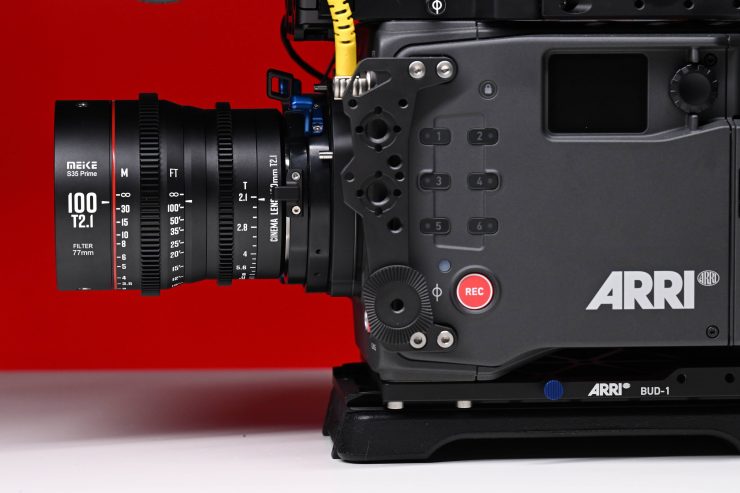
The Meike 100mm T2.1 S35-Prime Cinema has good optical performance, especially given its relatively low entry cost. The Meike could arguably give much more expensive lenses a run for their money.
Despite only having a T2.1 maximum aperture, the lens is still capable of creating good separation from your background and the bokeh is pleasing.
The build quality and mechanics are good, especially at this price point. The markings all line up correctly and the focus and iris rotation is consistent and smooth.
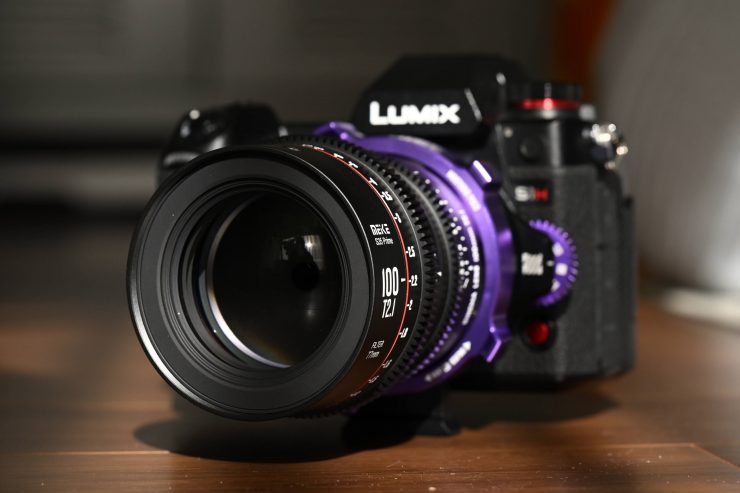
You may be thinking that the big downside of this lens is that it only covers S35 sensors, however, with a 33.5mm image circle, it isn’t too far away from covering full-frame sensors. In fact, I have previously tested the Meike S35 series on the Panasonic S1H to see what modes they will cover.
Above you can see that the 35mm S35 lens was able to cover 5888 x 3312 and even 5952 x 3968 Open Gate with no vignetting.

With the industry pushing forward with larger-sized sensors, investing in S35 glass may not be the best idea. In saying that, the investment in S35 lenses such as these isn’t a large one and if you are primarily shooting with S35 cameras then they are certainly worth looking at.
Price & Availability
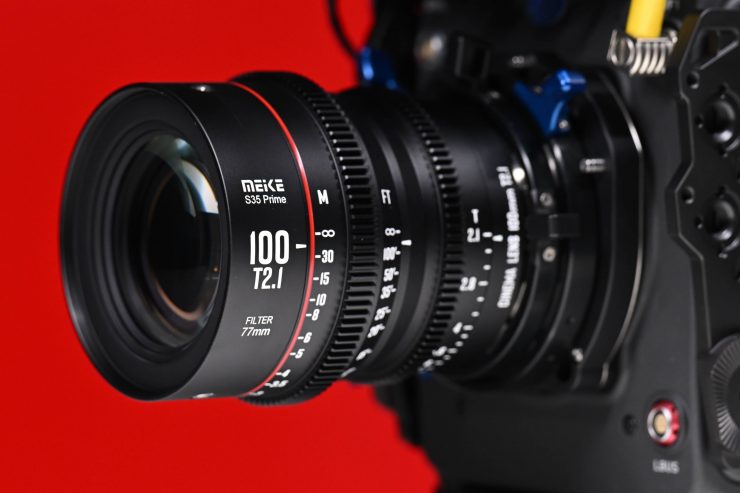
The Mieke 100mm T2.1 S35-Prime Cine Lens is now shipping for $649.99 USD.
Competition?
There is actually not a lot of competition in the S35 cinema prime marketplace, especially for lenses that come in either PL or EF mount. Most cine prime lenses being made today cover full-frame and larger sensors.
This probably gives the Meike lenses a little bit of an edge as they aren’t competing directly against a lot of other lenses.
As far as affordable Canon EF mount cine prime options are concerned, lenses like the SLR Magic APO MicroPrime Cine lenses could be considered competition. They have the same T-stop, however, they cover full-frame and larger sensors. You could also argue that Meike’s own FF Cine prime series and lenses from companies such as DZOFilm could be considered competition.
Do you need a full-frame cinema lens?
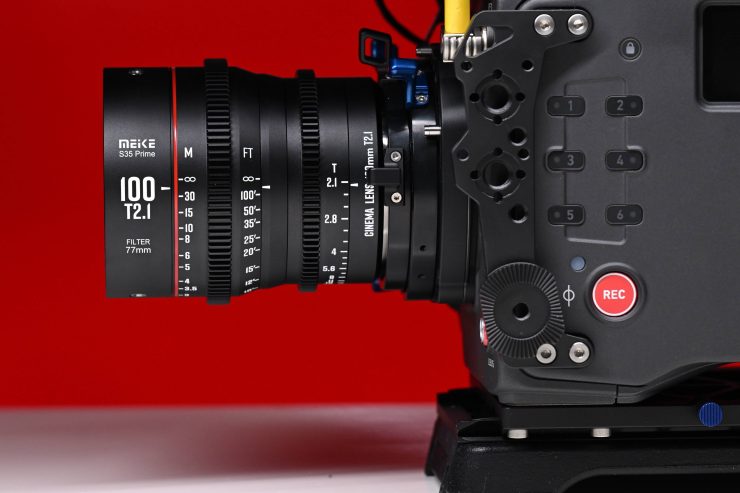
The answer really depends on what cameras you use and what you may end up using in the future. Let’s face it, a lot of us are not shooting on the RED DSMC2 Monstro 8K VV, or an ARRI ALEXA Mini LF, although in saying that, there are now quite a few affordable full-frame digital cinema cameras such as the Canon C500 Mark III, Sony FX9, Kinefinity MAVO LF, Z CAM E2-F6 Full-Frame 6K and 8K, etc. There are also lots of very affordable full-frame mirrorless hybrids and certain shooters prefer to use cine lenses on those cameras instead of native AF glass.
There has certainly been a push by manufacturers to bring out full-frame and larger digital cinema cameras, so lenses that cover full-frame and larger sensors have become more popular. However, with the recent release of more S35 cameras, there is certainly a market for lenses like the MEIKE S35.
I don’t generally shoot on a full-frame digital cinema camera, but I have still personally chosen to invest in full-frame prime lenses. I did this because the industry is moving quickly and I would prefer to spend my money on something that is going to be slightly more future proof than a lens that just covers an S35 sensor. In saying that, S35 glass is generally going to be lighter and more affordable and a lot of the cine zooms I own only cover S35.
Investing in a full-frame lens is going to cost you a lot more money than buying one that just covers S35 sensors, and you need to factor that in when considering what to buy.
Conclusion
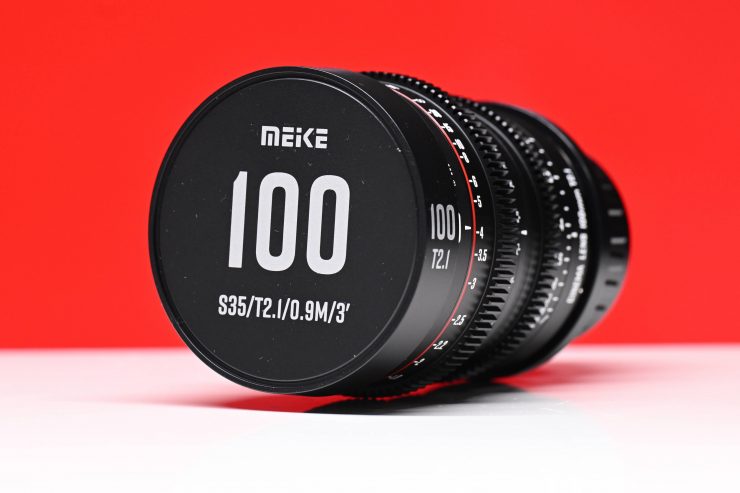
The Meike 100mm T2.1 S35-Prime Cinema Lens offers a good balance of price vs performance.
The 100mm offers good optical performance, it is relatively lightweight and it is decently made. The lens doesn’t have much breathing, it doesn’t show any real-world chromatic aberration and it produces pleasing bokeh. Yes, it doesn’t have a ton of character, but that isn’t necessarily a bad thing. If you want a sharp, optically good cine lens then the 100mm certainly ticks those boxes.
The reason this lens is only $649.99 USD is that it is only T2.1 and it only covers S35 sensors. You usually can’t have your cake and eat it too. If you wanted a faster lens and something that covers larger sensors then the price and size of the lens would both increase.
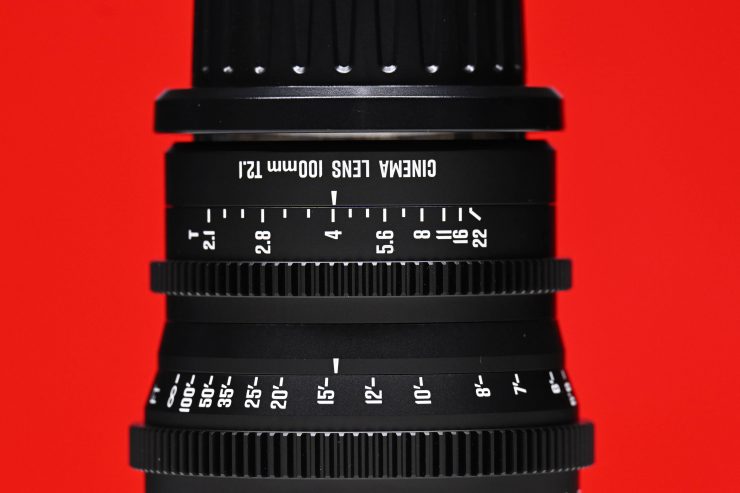
The mechanics and build quality are good for a sub $650 USD lens. The 270 degrees of focus rotation allows you to make finite focus adjustments without the associated problems of using stills glass. The barrel is significantly small enough that you can pull focus from infinity to the minimum focus distance by hand.
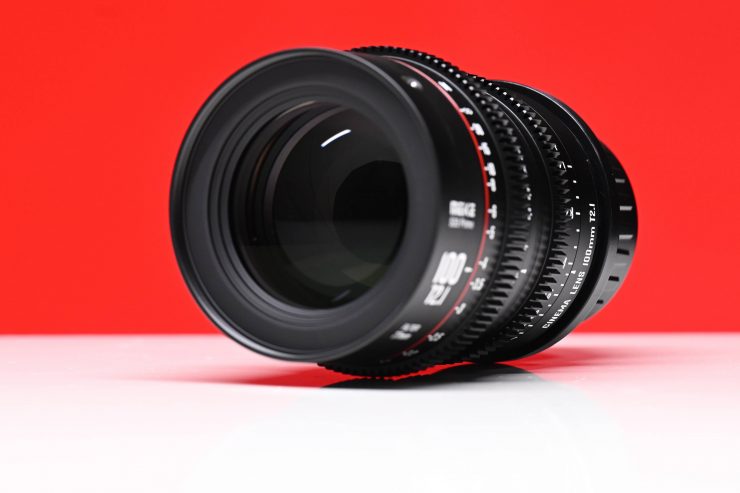
Having a 77cm front filter thread allows you to use common-sized filters which is important if you plan on using this lens on mirrorless, DSLR, or small-sized digital cinema cameras that don’t have built-in ND.
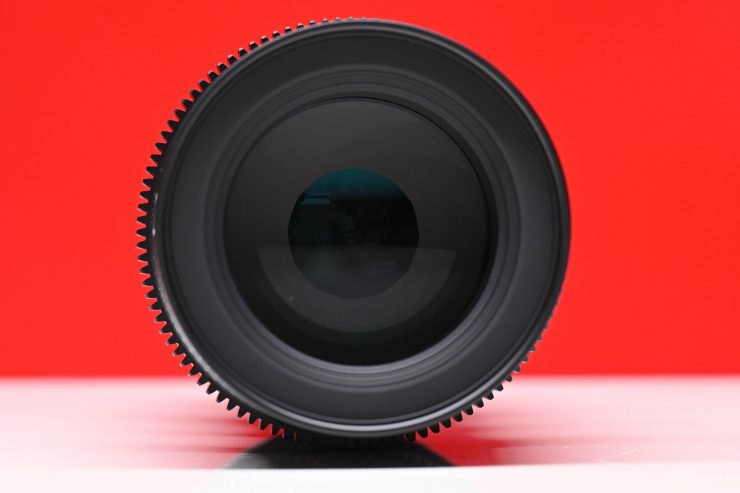
The fact that the lens will cover open gate on a Panasonic S1H certainly increases its versatility.
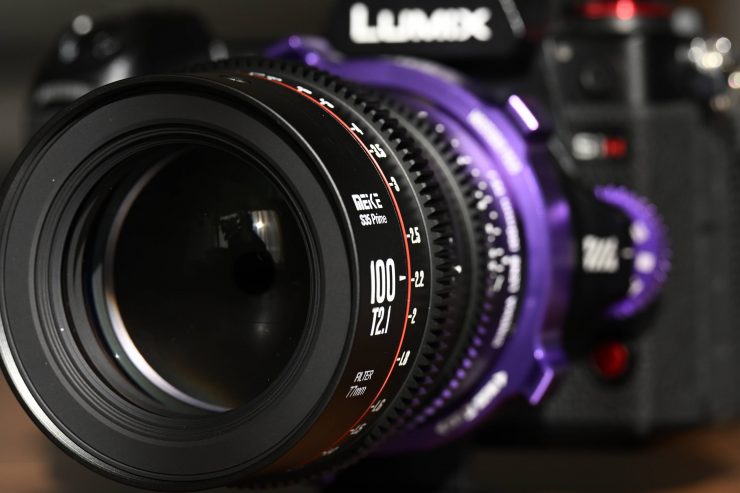
Meike continues to do a good job with their S35 Cine series and I highly recommend them if you are looking for affordable cine prime lenses. They offer a nice balance between optical performance, build quality, and cost.
While they may not have a lot of personality they offer a clean look that makes them a good choice for a lot of applications.
Like what we do and want to support Newsshooter? Consider becoming a Patreon supporter and help us to continue being the best source of news and reviews for professional tools for the independent filmmaker.

